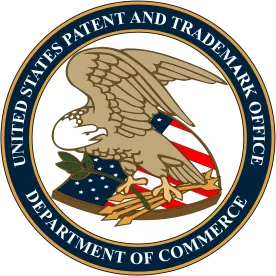On 21 June 2022, the United States Patent and Trademark office (USPTO) issued interim guidance on how the Patent Trial and Appeal Board (PTAB) should exercise its discretion when determining whether to institute a post-grant proceeding.
The guidance includes four notable takeaways:
-
“[T]he PTAB will not rely on the Fintiv factors to discretionarily deny institution in view of parallel district court litigation where a petition presents compelling evidence of unpatentability.”
-
“[T]he Fintiv factors [are] directed to district court litigation and do[] not apply to parallel U.S. International Trade Commission (ITC) proceedings.”
-
“[T]he PTAB will not discretionarily deny institution in view of parallel district court litigation where a petitioner presents a stipulation not to pursue in a parallel proceeding the same grounds or any grounds that could have reasonably been raised before the PTAB.”
-
“[T]he PTAB will consider the median time from filing to disposition of the civil trial for the district in which the parallel litigation resides” when assessing Fintiv factor 2.
Background
In Apple Inc. v. Fintiv, Inc., IPR2020-00019, Paper 11 (PTAB Mar. 20, 2020), the PTAB set out six factors that weigh for or against institution when there is a parallel district court litigation. With the goal of promoting efficiency, the factors look at:
-
whether the court has granted a stay
-
the proximity of the court’s trial date to the Board’s deadline for a decision
-
how invested the court and the parties are in the parallel proceeding
-
how much overlap there is between the issues raised in the post-grant petition and the parallel proceeding
-
whether the parties are the same, and
-
other equitable circumstances.
The USPTO’s recent guidance clarifies how the Board should analyze and weigh these factors.
No Denial When a Petition Presents Compelling Evidence
In cases where the post-grant petition presents a compelling, meritorious challenge, the PTAB will not discretionarily deny institution under Fintiv. The interim guidance explains that a compelling, meritorious challenge is one where the evidence, if undisputed, leads to a conclusion that the claims are unpatentable. Where the evidence presented is just enough to meet 35 U.S.C. § 314(a)’s threshold, the PTAB has the authority to deny institution in light of the Fintiv factors. But where the evidence constitutes a compelling unpatentability challenge, the PTAB is not to deny institution.
Fintiv and the ITC
In the past, the PTAB has denied institution based on parallel ITC investigations. See Philip Morris Prods. S.A. v. Rai Strategic Holdings, Inc., IPR2020-00919, Paper 9 (PTAB Nov. 16, 2020). The USPTO’s interim guidance closes the door on these denials, reasoning that ITC rulings cannot conclusively resolve patentability issues. Because the ITC lacks authority to invalidate a patent, and its rulings are neither binding on the USPTO nor on federal courts, a discretionary denial based on a parallel ITC proceeding does not necessarily reduce conflicts between proceedings. Thus, the interim guidance explains that the PTAB will no longer discretionarily deny institution based on parallel ITC proceedings.
Overlap Between Post-Grant Petition and Parallel Proceeding
The interim guidance also explains the benefits of filing a stipulation not to pursue the same or similar grounds of invalidity in both the post-grant proceeding and the parallel litigation. Specifically, it explains that if a petitioner stipulates not to pursue in a parallel litigation the same grounds as the petition’s, or similar grounds that could have been raised in the petition, the PTAB will not discretionarily deny institution. Given such a stipulation, the PTAB will review grounds that the parallel proceeding will not resolve.
Parallel Proceeding Trial Date
Fintiv factor two considers the proximity of the district court’s trial date and the Board’s statutory deadline for a final decision. In response to a Request of Comments (RFC) that the USPTO issued on discretionary denial of post-grant proceedings, commenters expressed concern with the use of trial dates. Because scheduled trial dates change often, they are not a good indicator of whether the district court’s trial will actually occur before the Board’s statutory deadline for a decision. Therefore, proximity to the trial date alone is not to outweigh the other Fintiv factors. Parties are to present evidence regarding median time-to-trial statistics for civil actions in the district where the parallel proceeding resides. Along with this evidence, the PTAB will consider additional factors such as the number of cases before the judge hearing the parallel proceeding and the speed of other case dispositions.
Conclusion
The USPTO’s full interim guidance can be found here. Look for this interim guidance to be replaced with rules after the USPTO completes its formal rulemaking process.
Ricky Taboada also contributed to this article.





 />i
/>i
